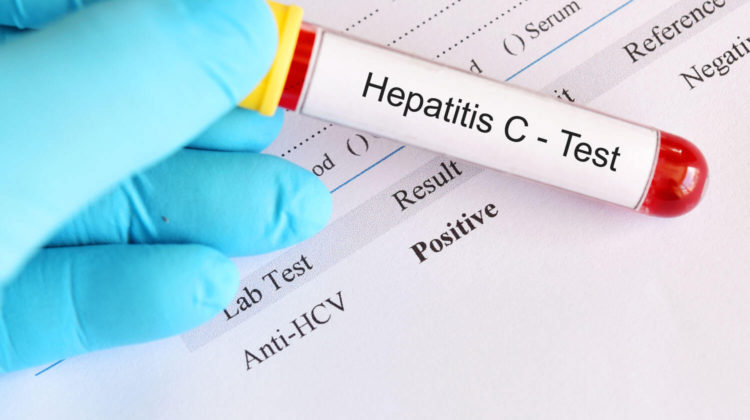
According to WHO, more than 71 million people are living with chronic hepatitis C infection worldwide. The number is increasing. Did you ever think about what can make you prone to hepatitis C?
Hepatitis C transmits through infected blood only. Health care workers, blood transfusion, organ transplantation, needles for drugs, snort cocaine, getting tattoos & piercings, and baby boomers are at the highest risk of getting hepatitis C infection.
What is hepatitis C?
Hepatitis C is a viral infection of the liver caused by HCV, hepatitis C virus. It is the most common blood-borne disease. On average, it can take up to 45 days for symptoms to appear after infection. But the incubation period can be anywhere between two weeks to six weeks. Sometimes the virus takes even more time to show its symptoms in many people.
Hepatitis C causes liver inflammation in acute stages. If the disease is left untreated, it can lead to scarring of the liver. Chronic hepatitis C can disturb various organ systems in the body and lead to liver cancer and cirrhosis.
Symptoms of hepatitis C are common such as vomiting, nausea, fatigue, jaundice, joint pain, loss of appetite, and stomach pain. These symptoms are prevalent in almost all diseases. Thus, many people fail to identify the disease in acute stages.
Therefore, experts suggest getting a two-step test for the diagnosis of HCV. The diagnostic techniques involve ELISA for the screening of the virus. However, ELISA interpretations can produce a false-positive result. Thus, physicians use recombinant immunoblotting assay (RIBA) or HCV RT-PCR to confirm the infection. Connect with one of the representatives from Boster Bio for antibody tests and BDNF Elisa kits.
Risk factors for hepatitis C?
Hepatitis infection transmits through contaminated blood and body fluids only. Relatives of the patients and health workers treating them are at high risk.
Figure 1:These are approximate values collected from various reliable sources. Here is the complete list of high-risk factors of hepatitis C.
- Injection Drugs: Drugees are susceptible to diseases. According to New York State health department, sharing used needles and syringes is one of the most common causes of HCV transmission in the United States.
- Tattoos: People with tattoos are more likely to have HCV infection than those who don’t have any tattoos. During tattooing, a needle punctures the skin to fill it with pigments. Thus, there are high chances that tattoo machines carry numerous infections already, and hepatitis C is one of them.
- Healthcare Workers: People working in hospitals and healthcare centres are always on the radar of HCV. They are at constant risk of coming in contact with the body fluids of HCV-infected people.
- Prisoners: Around 12% of prisoners in the US have hepatitis C infection. The majority of prisons use injection drugs. Apart from that, sharing things like razors also puts them at risk of having HCV infection.
- Mother to baby: People born to mothers with hepatitis infection are prone to HCV infection. Out of all the hepatitis patients, 2- 8% inherit it from their mothers.
- Hemodialysis Patients: One of the notable causes of death in hemodialysis patients is hepatitis C infection. Unclean equipment can cause infection to the HD population.
- Blood transfusion and organ transplantation before 1992: People who had a blood transfusion before 1992 or any organ transplantation are at high risk of getting hepatitis C.
Baby boomers: At radar of Hepatitis C.
Baby boomers are a group of people who were born in 1945-1965. This generation captured the immediate attention of medical practitioners between the 1970s -1980s.
In the later decade, the number of people having HCV infection raised dramatically to more than 2,00,000 towards the end of the 1980s. Upon investigations, health agencies found a surprising fact. Out of total HCV patients, the preponderance was born in 1945-1965.
According to a journal published in PMC in 2014, more than 50% of baby boomers had a drug history. Other factors included non-Hispanic Blacks and persons with elevated alanine aminotransferase levels. But people with injection drug history were at peak risk for getting a hepatitis C infection.
Is hepatitis a risk factor for COVID-19?
COVID-19 is a lung infection caused by the SARS-CoV-2 virus. It started in 2019 and broke into a pandemic worldwide.
People diagnosed with coronavirus had an increased level of liver enzymes like alanine aminotransferase (ALT) and aspartate aminotransferase (AST). These are the same enzymes that were high in baby boomers.
People with a medical history of liver disease are prone to coronavirus. Many studies have proven the fact that COVID damages the liver. But there is no direct evidence that ALT and AST increased levels were the result of COVID infection.
Summary:
Hepatitis C is a disease that scars the liver and can cause liver cancer also. People who are healthcare professionals, people who went to prisons, and get tattoos and piercings are at high risk of hepatitis C.
Apart from this, baby boomers take a significant share of HCV patients. In addition to this, people who had a blood transfusion and organ transplantation before 1992 are also prone to HCV infection.

